Post date:2016-06-17
Updates:2016-08-23
1251
Article: Beher Kitchen www.beher.com.tw
Guess where this kitchen is? An electric pot is nowhere to be seen, but there is a Kurdistan 1 frying pan, as well as a sticky rice bamboo steamer from Laos and five different style pestle and mortar sets from India, Mexico, Japan, Indonesia, and Thailand, respectively. There are no cutlery sets, and the wooden and ceramic bowls are all different. This is because they are changed daily for the pleasure of matching them with different foods. This is the kitchen of Naomi Duguid in Toronto, Canada and the secret base from where she has produced seven award-winning cookbooks.
A desire to interact with the world motivated her to change from a career in law to one in photography and writing, in which she moves between text and images. She also enjoys learning belly dancing and shape note singing. Laughingly, she says that maybe she will never perfect all of them, thus she is lucky that she will never be forced into specialization. With the opening up of Tibet, Myanmar, and Iran to the world, she has recorded some of their homemade dishes and has cooked them as a colorful toast to the world. In this way, she has melted away national borders between foods and cultures.
A Spoonful of World Flavor
The world is a dynamic kitchen where the people we meet and events we experience become part of the complex flavors of life. While our meals are fragmentary, together they record cultural and social manifestations. We therefore take food as our lens for exploring both the past and present and peering into the future. Besides aiming to cultivate dialogues in food through stories of inspiring professionals and changemakers, we hope to create a channel for the world to engage with Taipei.
In the 1950s, growing up in Ottawa, Canada, labor lawyer Naomi Duguid felt that the North American food culture for so long is very European-focused and pay attention to banquets cuisine only. At a time when her country was under the influence of Europhilia, with her lens and pens, she began to defend traditional cultures and home cooked foods around the world that are less known. Showing a metal spatula that she has had since law school, she shares her obsession with hand kitchen tools. If you can use the palm of your hand to crush garlic why would you need a machine to do it? Open your heart to feel the foods and encounter with people. (Courtesy of Laura Berman)

Beher Kitchen, founded in 2008, seeks to incubate diversity in food and lifestyle and tune into the sources of everyday living. Curating various activities on culinary culture and food origin trips, we hope to teach sustainability and blend aesthetic education into life by sharing the characteristics, creativity, experiences, and movements in food.
For more than thirty years, she has revealed the foods and regions that are less written. Out of a sense of curiosity, she traversed the Pamir and the Karakoram Mountains by bicycle. In the future she will travel through Southeast Asia by boat with her two sons. Most currently, she leads intensive food-focused tours of the Thailand and Myanmar border region and lectures on food history in University of Toronto. She would rather be a benevolent and observant traveler than a reporter who excavates the truth. "I'm just trying to see what I see. Stop first , look and start to as ourselves questions" said Naomi. She feels no need to visit must-see scenic spots or try must-eat dishes. She immerses herself in the unknown using flavor as her anchor with everywhere beckoning as a homeland.

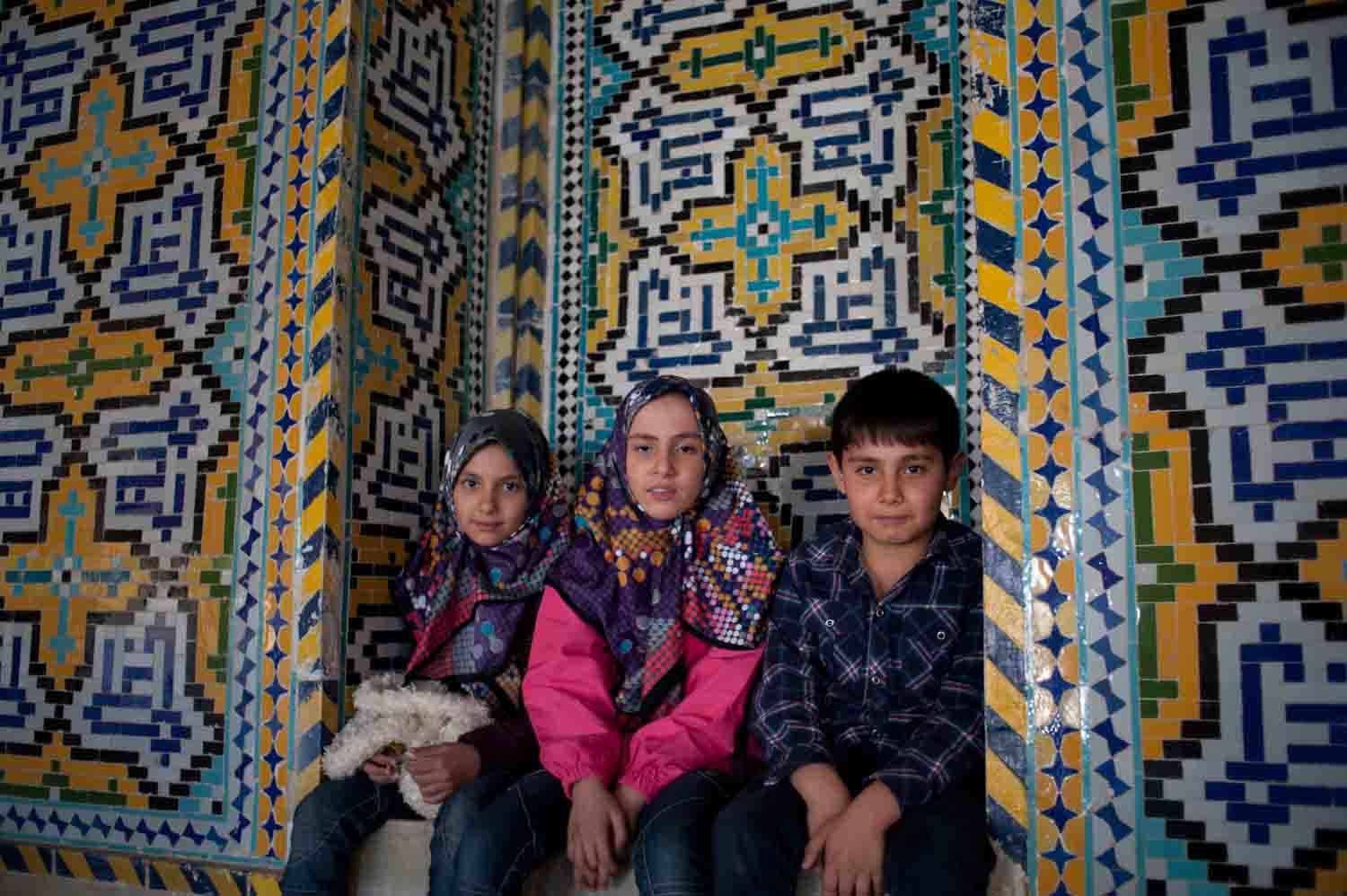
Did you know that before chili peppers, potatoes, tomatoes, peanuts and corn from the Americas made their way to other parts of the world, exchanges were already in place between the Persian and Chinese civilizations? These included the introduction of wheat and apricots from Iran to China and the export of mulberry leaves from China. Rice is a staple food of Kurdistan. However, its rice culture differs from that of Iran. Georgia, Armenia and Azerbaijan all have natural environments similar to that of Guizhou in China. However, the writing and language systems of these three countries are all different. Although having been under Soviet rule, they have preserved their traditions of hospitality. Everywhere you can see fruit trees, cheese and vineyards. In the fall of 2016, Naomi Duguid will release a cookbook 3 in which she shares 1001 stories from the lands of Persia. (Courtesy of Naomi Duguid)
In your cookbooks, the flavor of cuisine does not just come from the ingredients but also from the aromas, colors, sounds, and ambience inside kitchens. Why did you prefer to unfold the stories in this way?
I am most interested in how people feed themselves and their families on a daily basis. We survive as individual and as collective as culture or country. We're all very different and come up with creative ways of living to shape culture. A desire to know how do people live with what they have and why things are the way they are is my starting point. You can also gain an understanding of culture through music, textiles or crafts, but sometimes they are not easy to unearth. However, everybody has to eat food on a daily basis. It is very practical and tangible, and as a result food has become the way that I make inquiries about the world. For example, in Mexico corn tortillas are central to the local way of life, and when this is especially true among women. This has to be told in order for the story of corn tortillas to be complete.
Simple and no-frills everyday cuisine holds the greatest attachment for people. Which of these foods make you emotional and stimulate your memories?
Let me think about it. There are too many! My earliest memory is of my mother making toast with butter and marmalade. That small trace of bitter flavor was truly satisfying. Besides that, I have a soft spot in my heart for foods made from rice, even leftovers. Just using it for fried rice or frying it with green vegetables and putting a fried egg on top can make it into hearty food. It is also really soothing as breakfast food. Aromas are like doors through which I directly access deep memories. Anytime that I smell burning juniper I cannot help but remember the plumes of smoke during a pilgrimage to Tibet. Similarly, when the spices hit hot oil, I am surrounded by fragrance that brings me back to Bangkok right away. Being able to pay close attention to feelings produced from the sense of smell is a very fortunate thing.
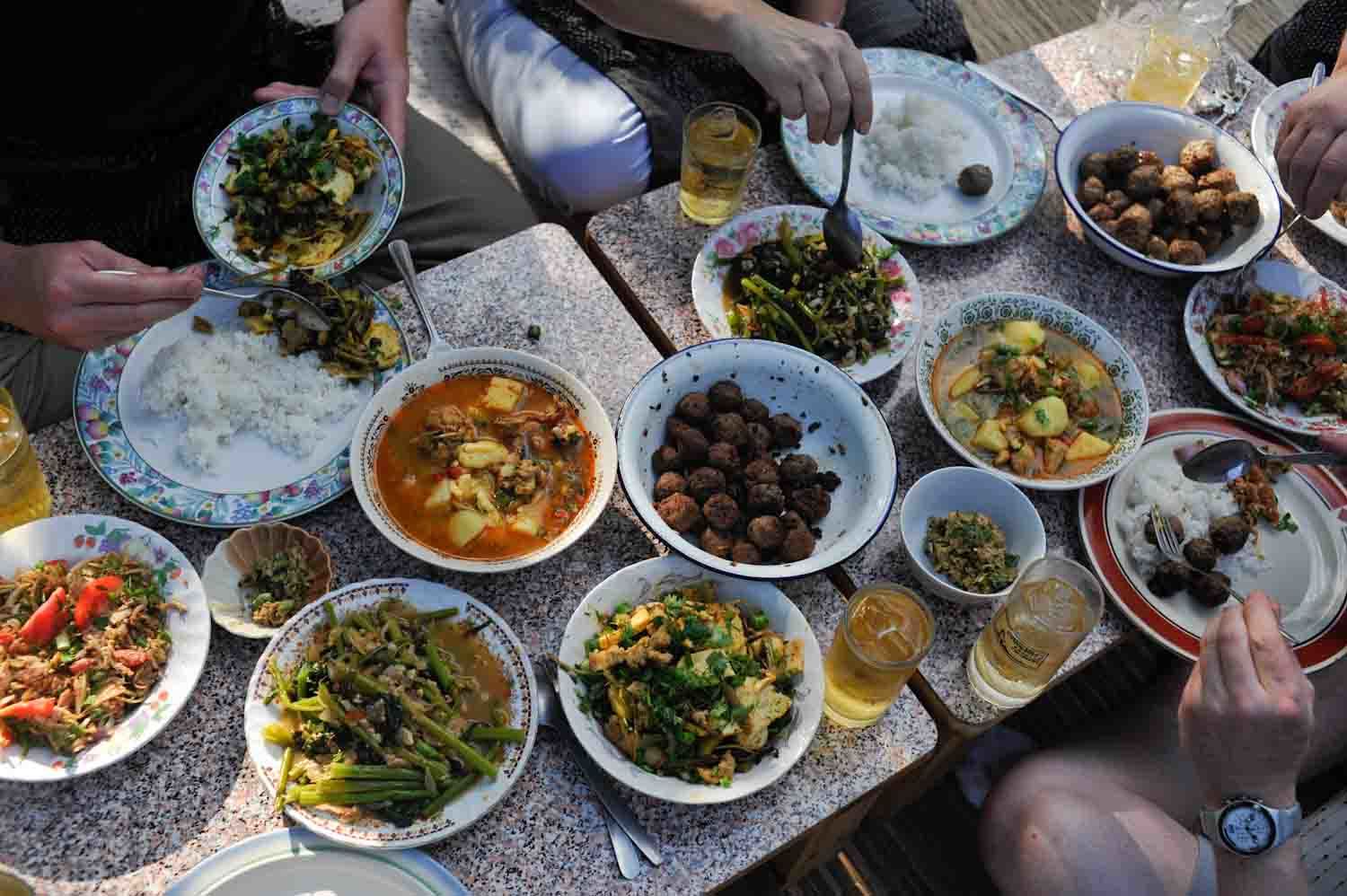
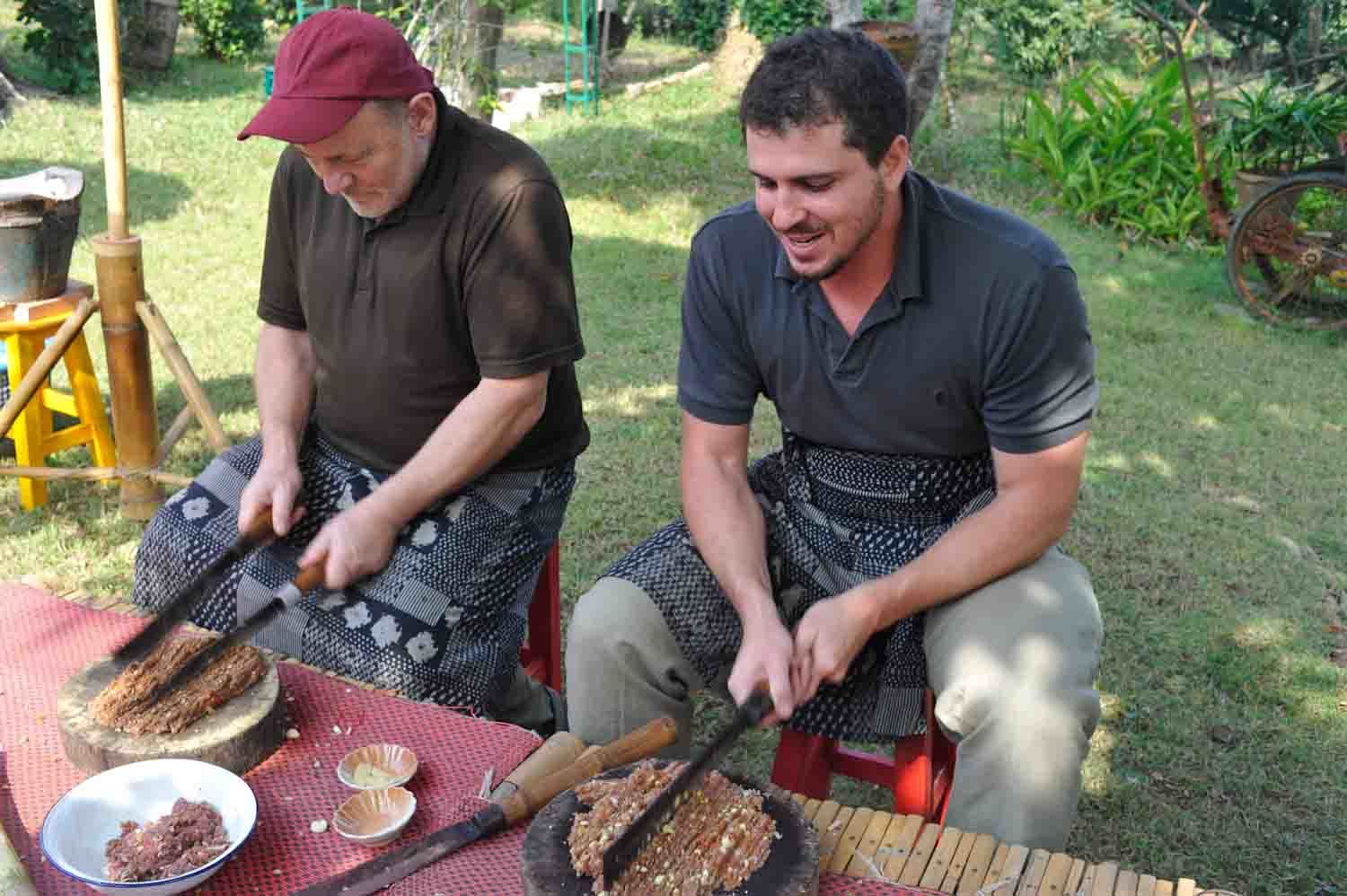
Top: Since 2009, Naomi Duguid has been traveling to the Thai-Myanmar border region to lead food tours and to learn the cuisine of the Shan people from the local women. The students from Western countries are thrown into traditional wet market to shop. They are given a list of ingredients but no recipe to follow. During class, they must be fully in the present using their hands, eyes, ears and mind. Bottom: Two knives are used simultaneously to mince ingredients (referred to as laap in the Thai language) while paying attention to the texture. Pestle and mortar are used to grind pungent ingredients. These are the common food preparation methods of northern Thailand. Only through careful observation and continuous practice, can they become imprinted on one's body and memories. (Courtesy of Naomi Duguid)
You mentioned your captivation with rice. You have chronicled the Eurasian rice cultures and have visited Taiwan. Can you share with us your impressions
of Taipei?
The first time that I visited Taipei was 21 years ago. Although it was only a short four-day visit, I traveled by bus to the tea fields in the city outskirts and I asked how to make them, the women there were shocked that I did not already know. They felt obligated to teach me and correct me. I did not mind this and felt that their generosity was heartwarming and admirable. The desire to help and perfect one another stems from human nature, and strolled around the city center. There were not as many skyscrapers as today and the pace of the city was not rushing. A lot of Westerners had come to Taiwan to study Chinese. I really enjoyed walking on the streets with smell of cooking food everywhere, visiting the temples, and going to each small food stall on a tour of the flavors. I was especially stunned by the rich and dark herbal stews and all the different kinds of remarkable tea! On winter days in Toronto when I have the beef soup that my Taiwanese neighbors make the memories of these foods are especially vivid. A lot of people say that they want to try authentic Chinese foods, and I believe Taiwan still is one of the best places in the world to eat diversity of amazing Chinese food from all the provinces.
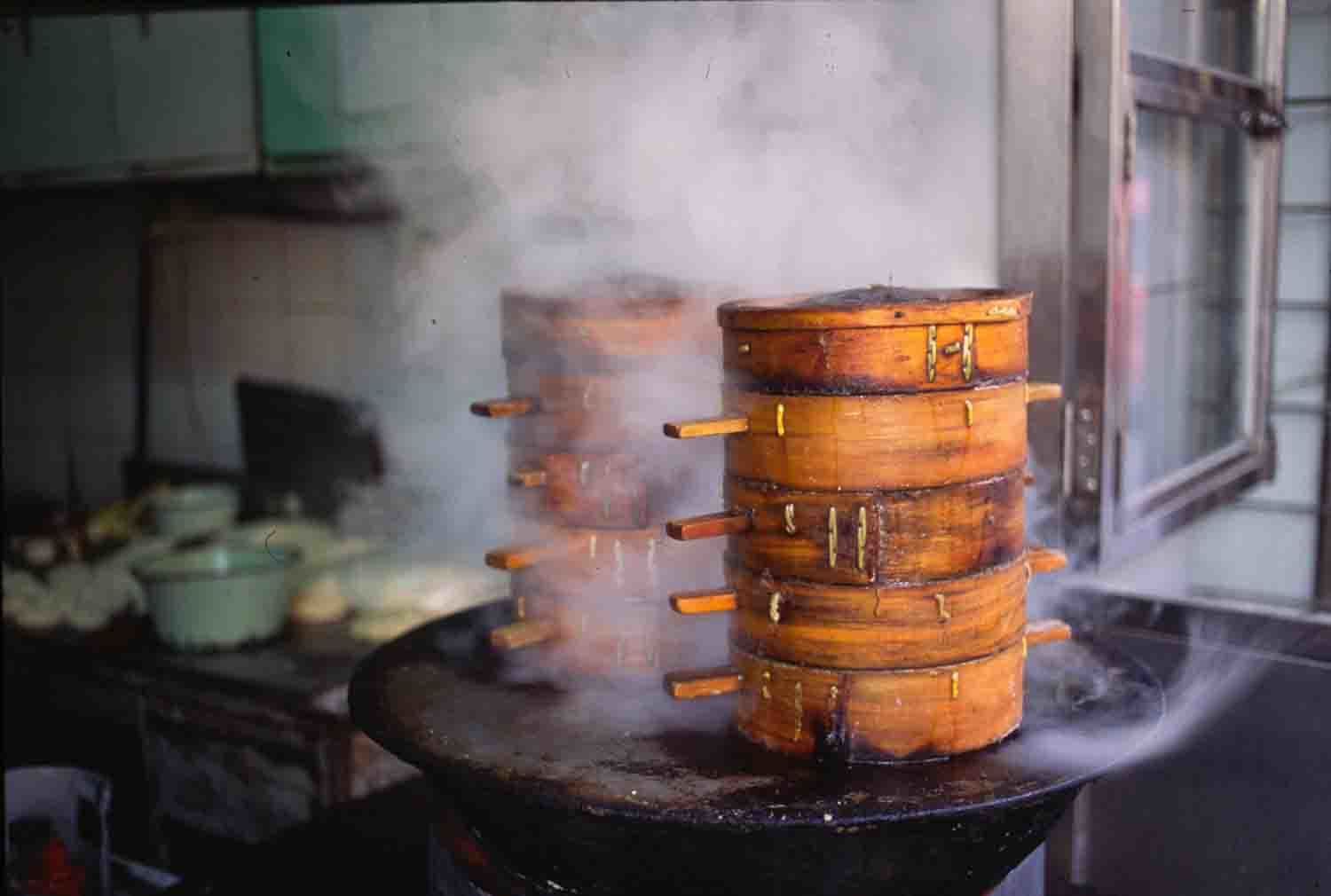
From ingredients to kitchen utensils, cooking methods, materials for creating heat, the person cooking, how the food is eaten, and with whom the food is eaten all reflect a type of knowledge that comes from the interaction between humans and the environment. Slowly, this knowledge accumulates to become food culture. The filling of piping hot Mongolian steamed dumplings is mostly mutton complemented by fermented milk curd or pickled vegetables. These differ from Tibetan steamed dumplings (also referred to as momo) which use yak meat for their filling. In 1985, a trip to China inspired Naomi Duguid to leave behind her black gown in the court and visit home kitchens in foreign lands. She traveled to Xinjiang, Mongolia, Yunnan, Guizhou and Tibet and learned about the cuisines in China other than those of the main cities such as Beijing and Shanghai. She and Jeffrey Alford then collaborated on a book entitled Beyond the Great Wall: Recipes and Travels in the Other China , in which is described the food landscapes of the minority ethnic people of China. (Courtesy of Naomi Duguid)
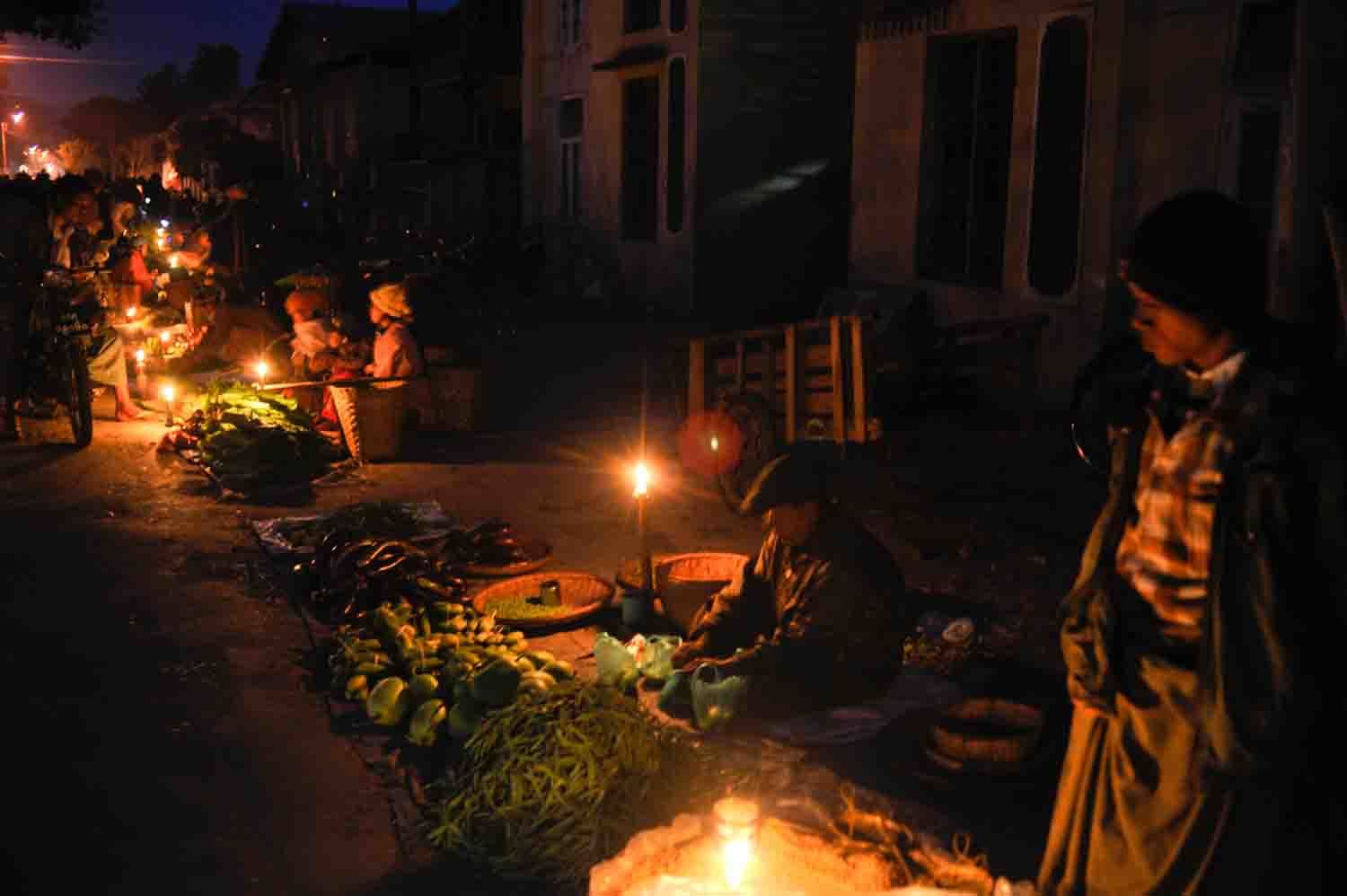
The darkness of night has not yet receded. Candles bathe Hsipaw Town in the Shan State of Myanmar in a warm glow. In the local market, shoppers silently allow the monks involved in morning prayers to pass. Naomi Duguid visited Myanmar for the first time in the 1980s. Every time she left, she would worry that she would not be allowed back. Since 2010, when the military junta that had been in power for nearly half a century relinquished its power, she has seen a change among the people who are slowly beginning to open up and smile in the public. Traveling by boat along the Mekong River, she has tasted the sour, salty, sweet and spicy flavors of a diverse array of peoples including the Bamar, Shan, Kachin, Karen, and Chin. These stories are unfolded in her cookbook entitled Burma: Rivers of Flavor. (Courtesy of Naomi Duguid)
Naomi Duguid:
naomiduguid.flavors.me
Immerse Through Trip:
http://www.immersethrough.com/
 TAIPEI 2015Winter Vol.02—Tastes Like Home
TAIPEI 2015Winter Vol.02—Tastes Like Home




